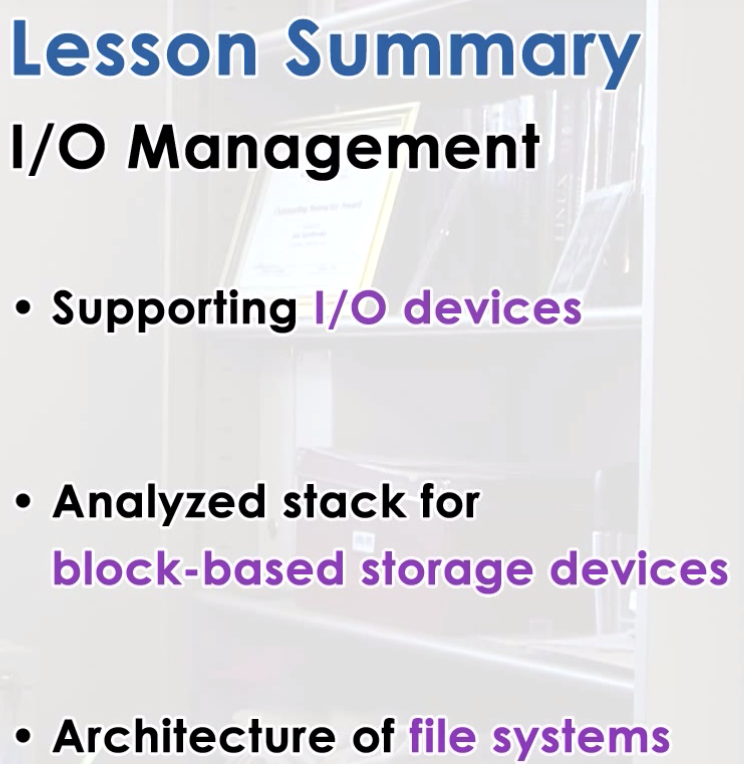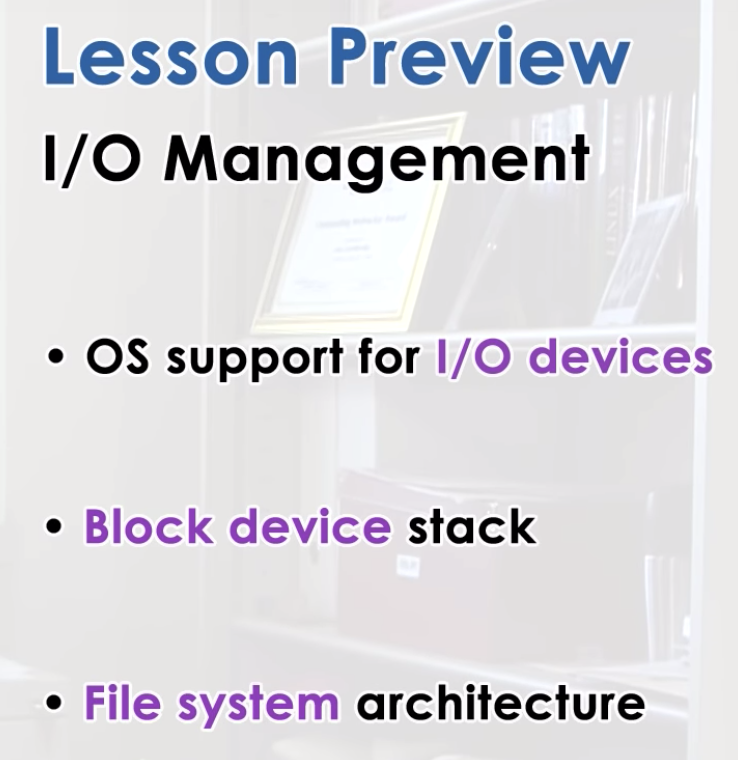
Visual Metaphor
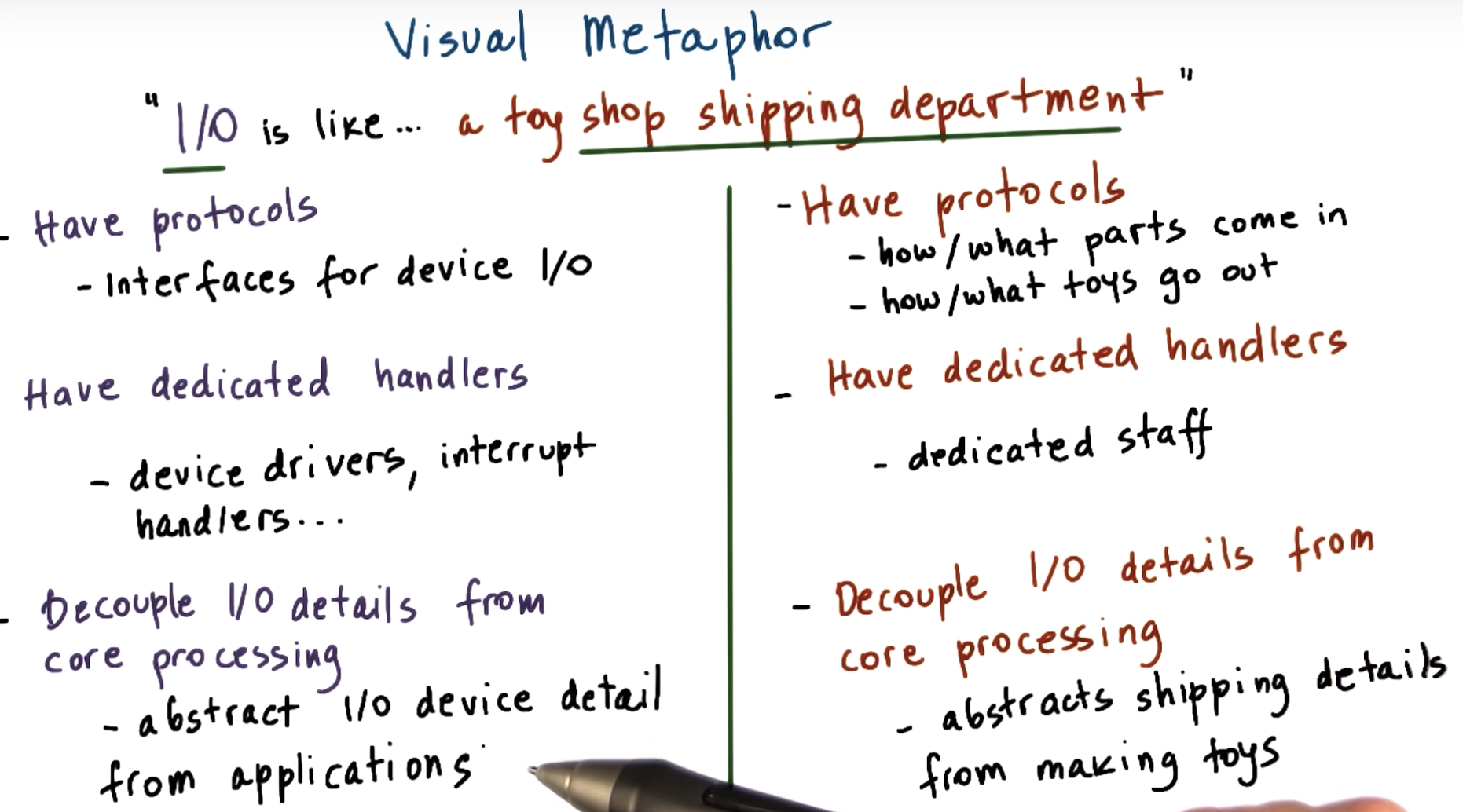
I/O Devices


I/O Device Features

status registers => for CPU to find out what's happening on the device
command registers => for CPU to control what exactly the device will be doing
data registers => for CPU to control the I/O of the device
Figure 36.2 Reference
Figure 36.2 is referenced from the "I/O Devices" section in Three Easy Pieces.
- Remzi H. Arpaci-Dusseau and Andrea C. Arpaci-Dusseau. Operating Systems: Three Easy Pieces.
Arpaci-Dusseau Books, Version 0.80, May 2014.
CPU Device Interconnect
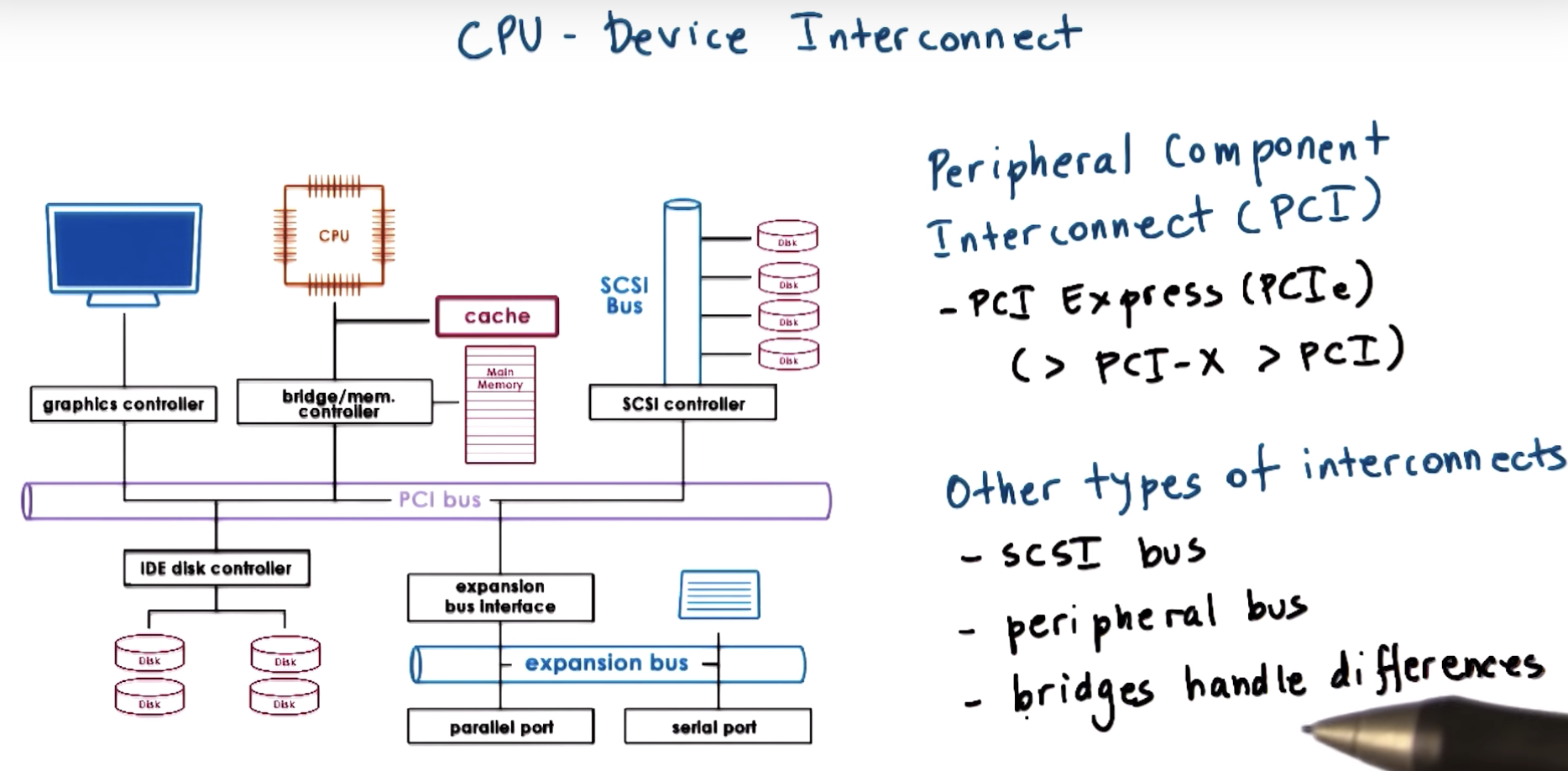
Device Drivers
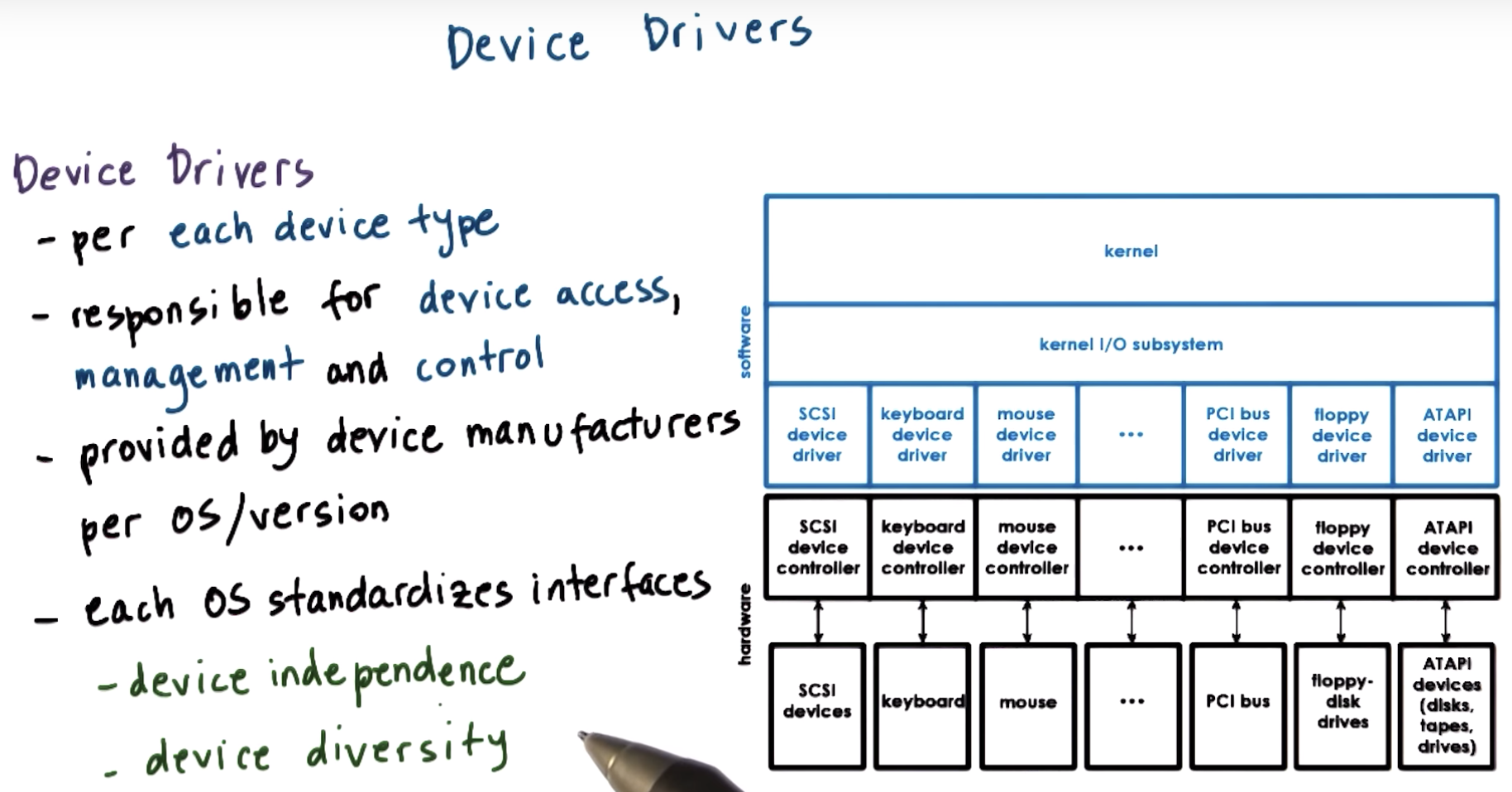
Here is a link to HP Device Drivers (like the drivers mentioned @1:13).
Types of Devices

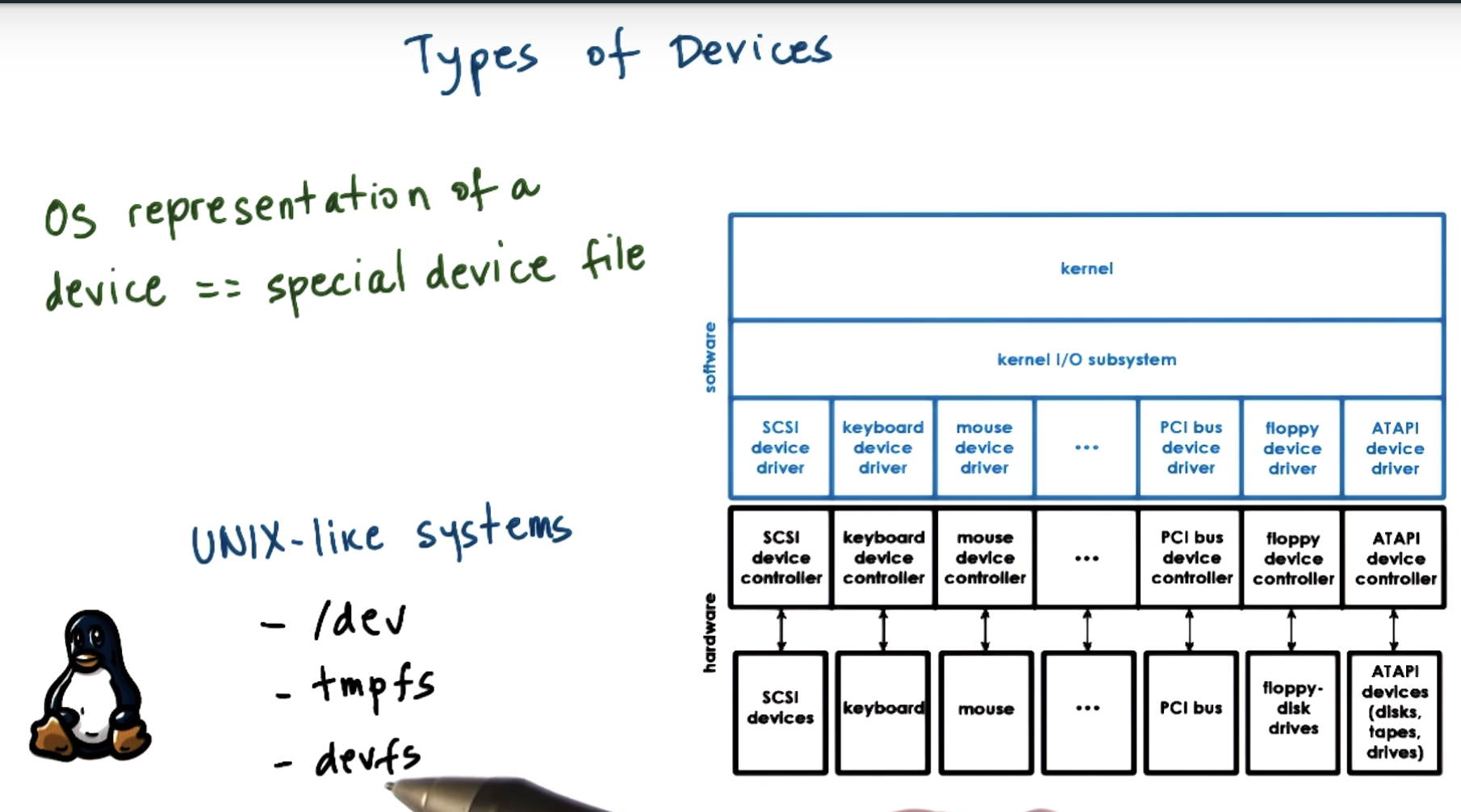

lp => line printer
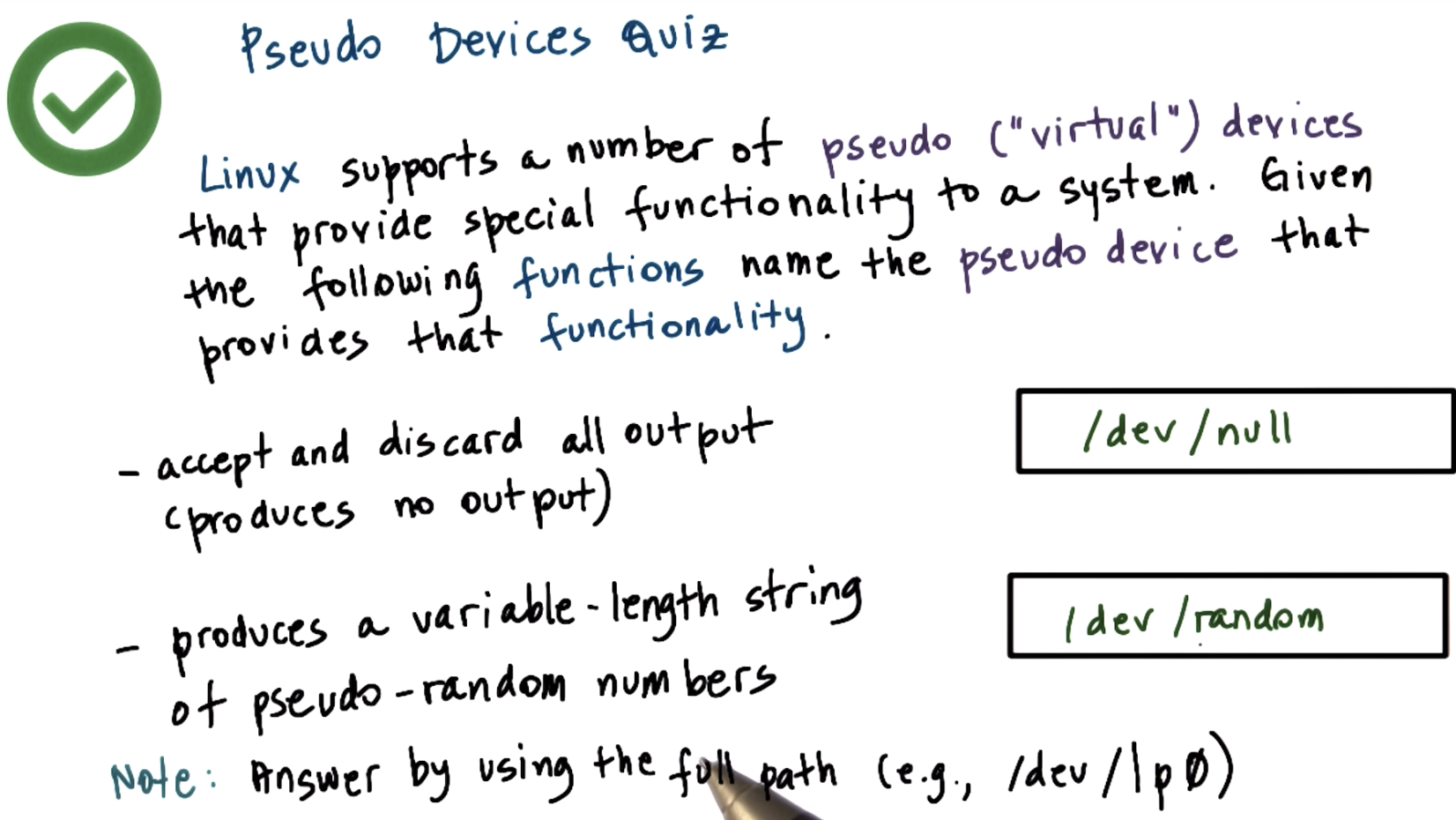
Click the following links to find out more information about /dev/null (also known as the Null device) and /dev/random.
if you want to discard the output of a process you can send it to /dev/null
a more robust conterpart of dev/random is dev/urandom => create files with random bites
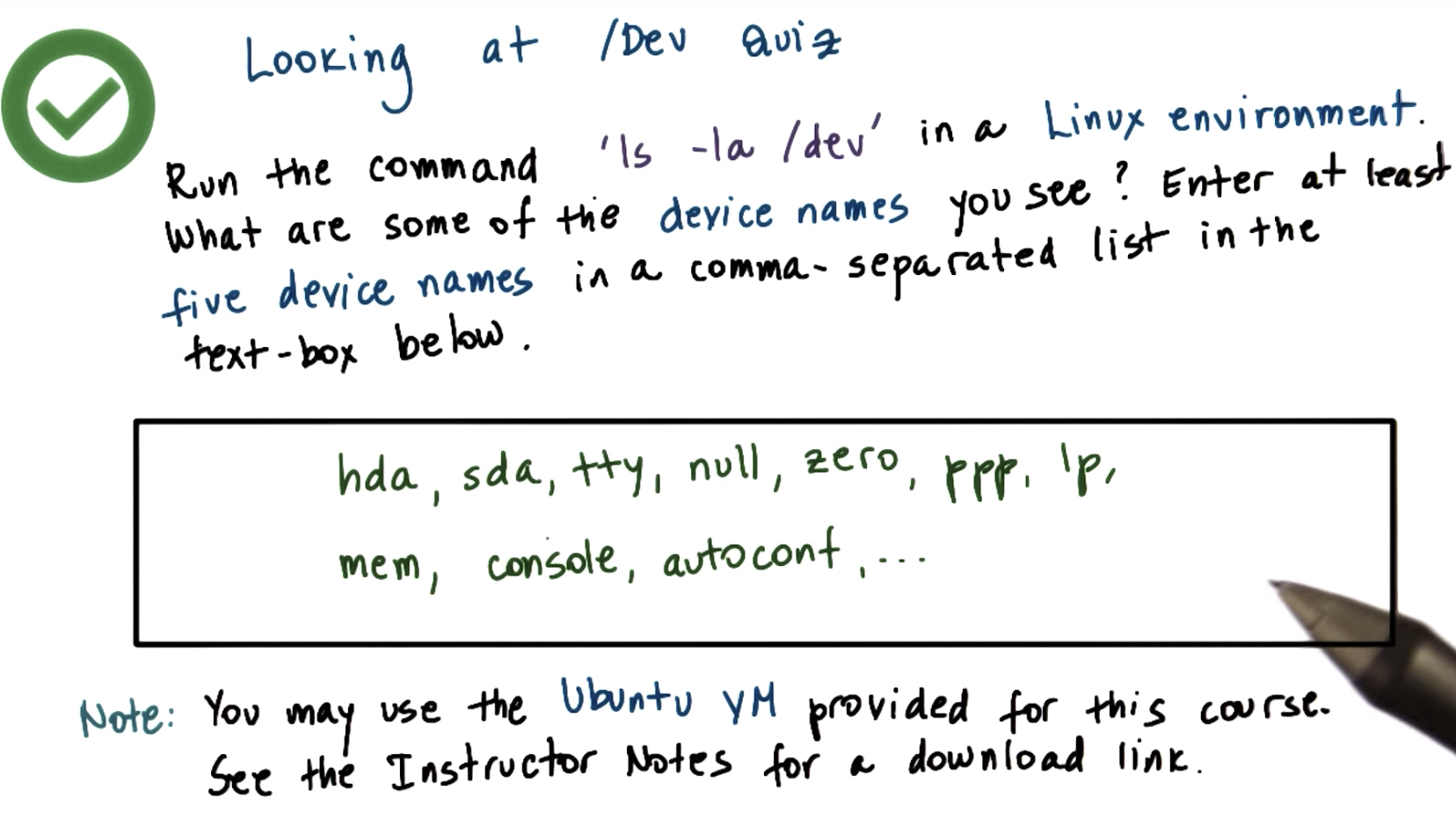
CPU Device Interactions
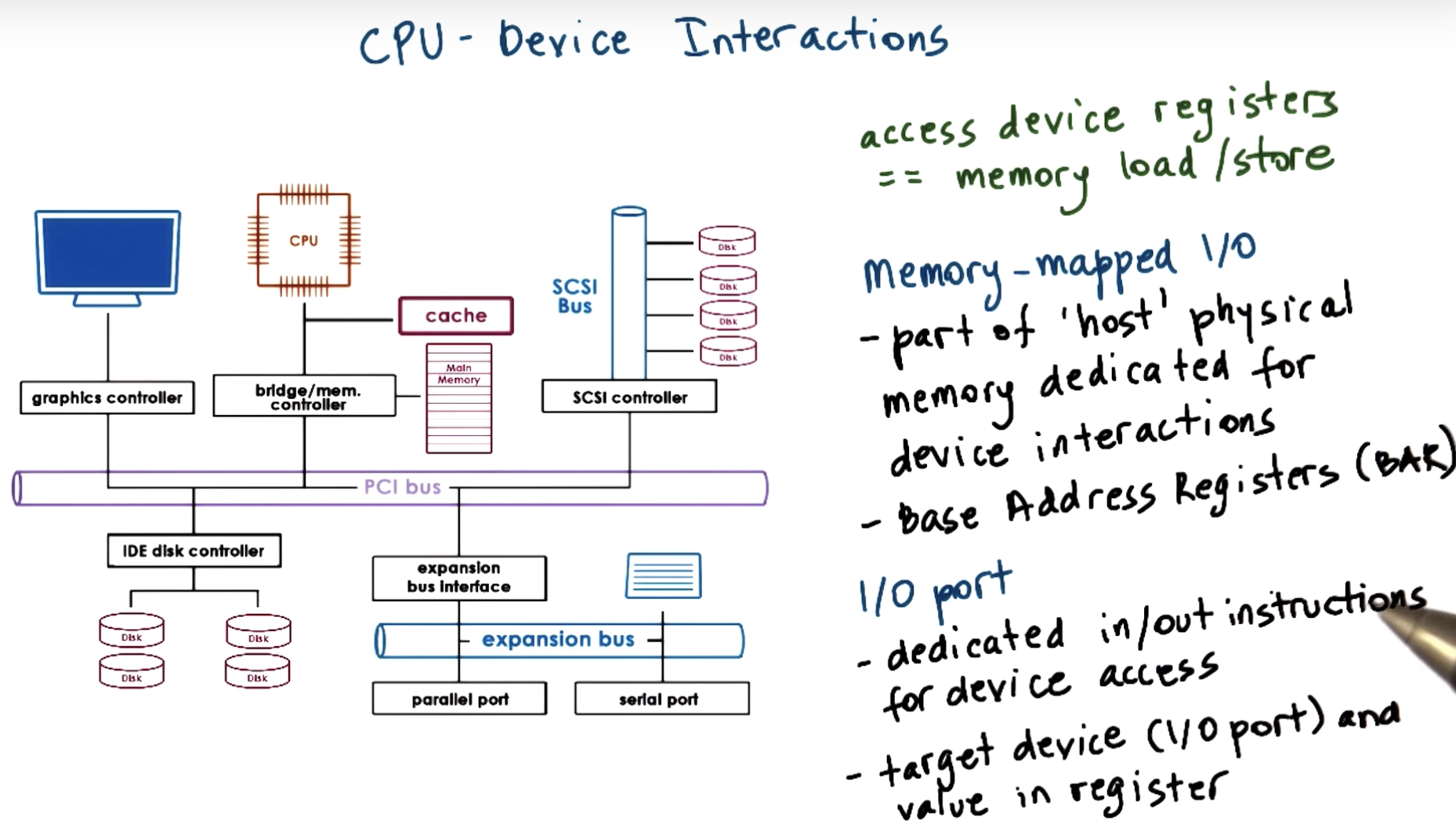
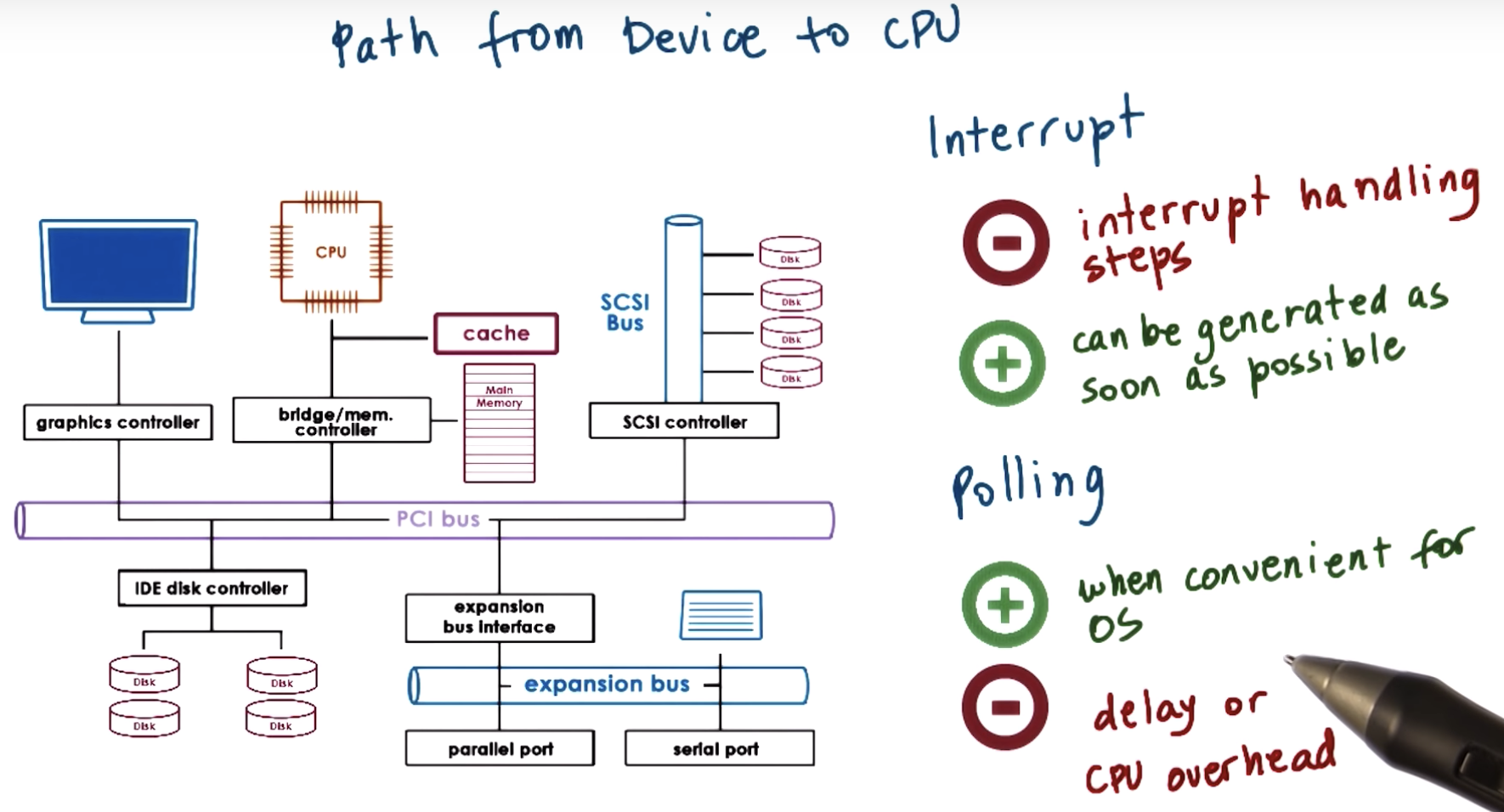
interrupt or polling should be depent on the device type and the objectives.
interrupt: signal sent from device to CPU
polling: for CPU to access device
Method1:Device Access PIO

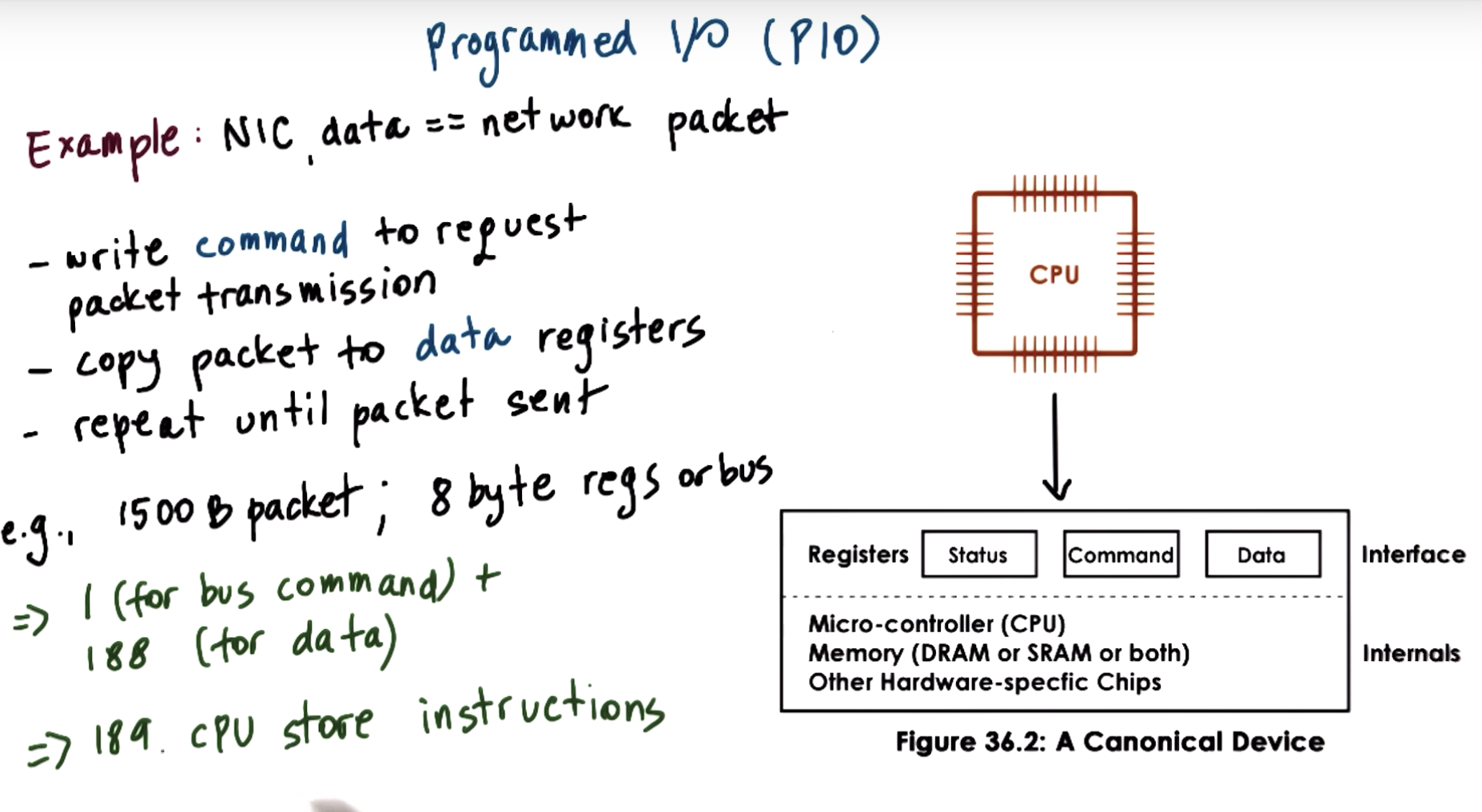
Method2:Device Access DMA
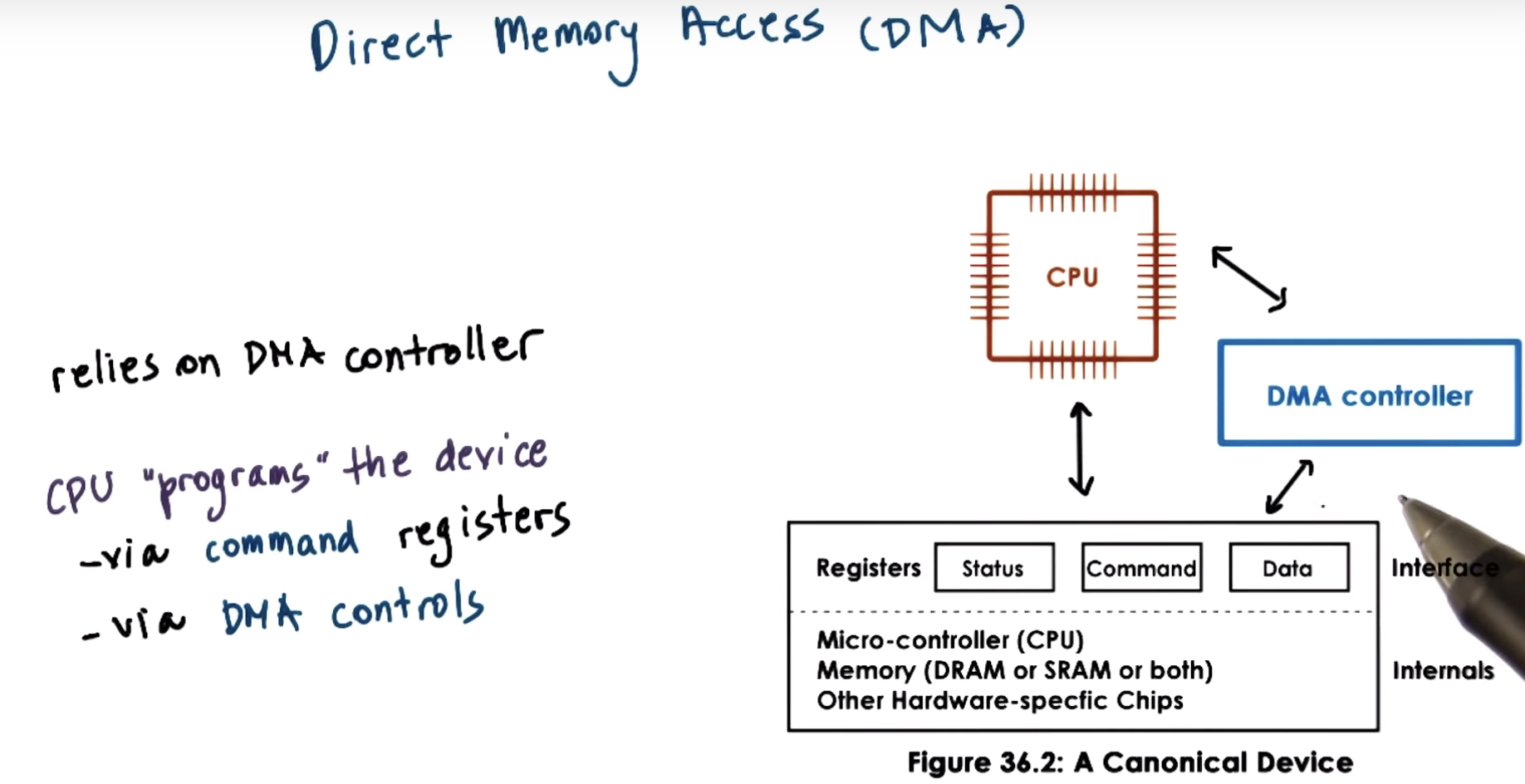
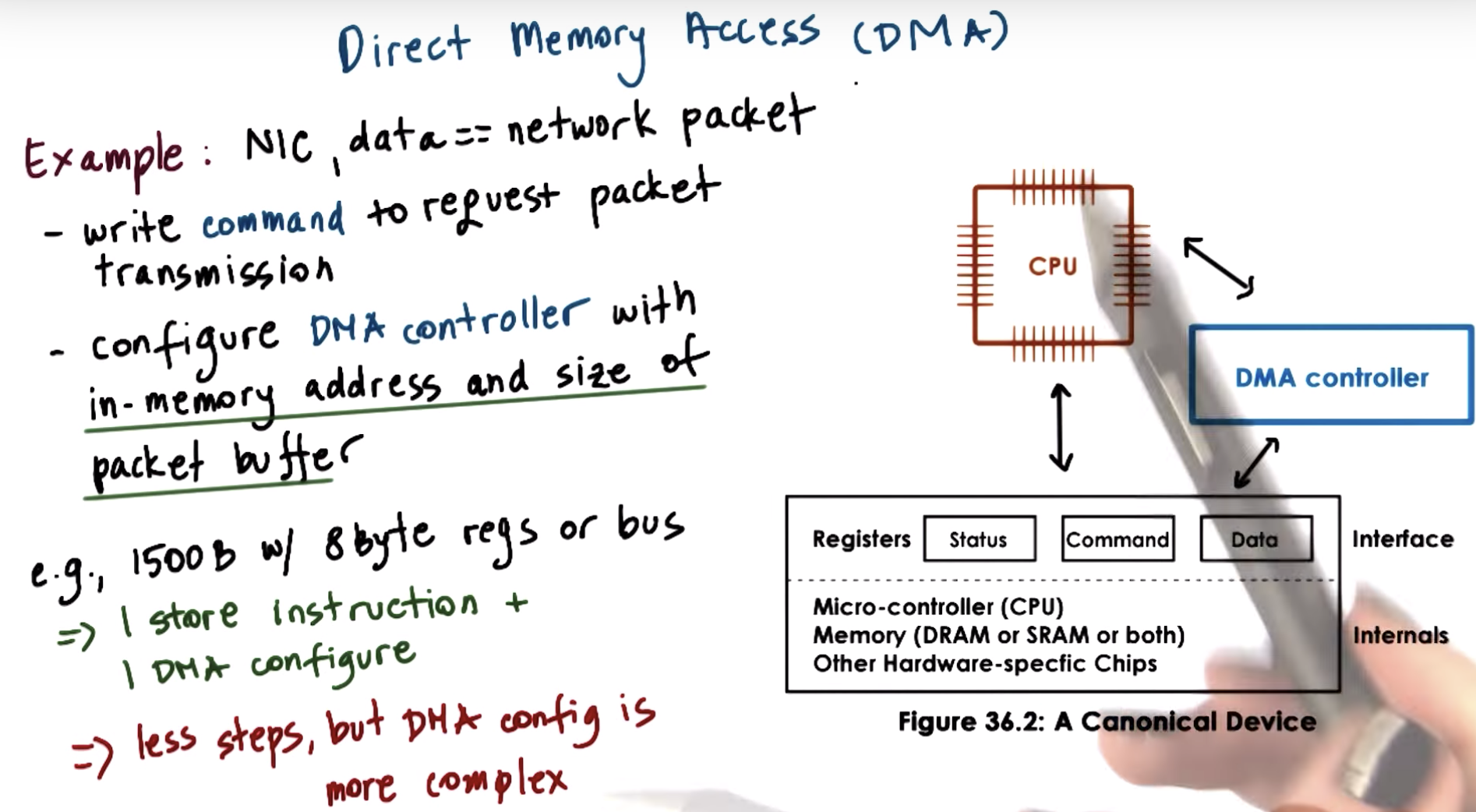
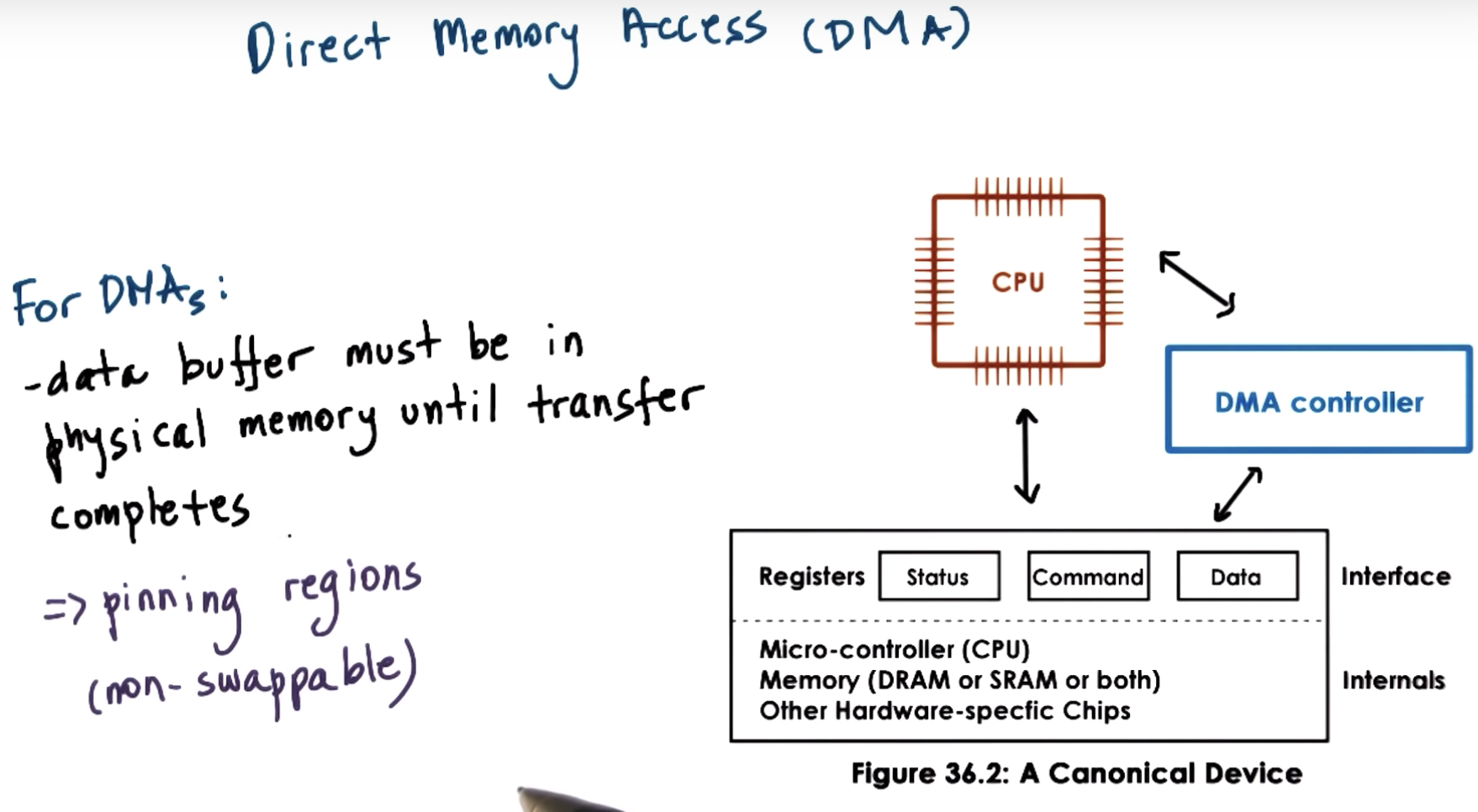
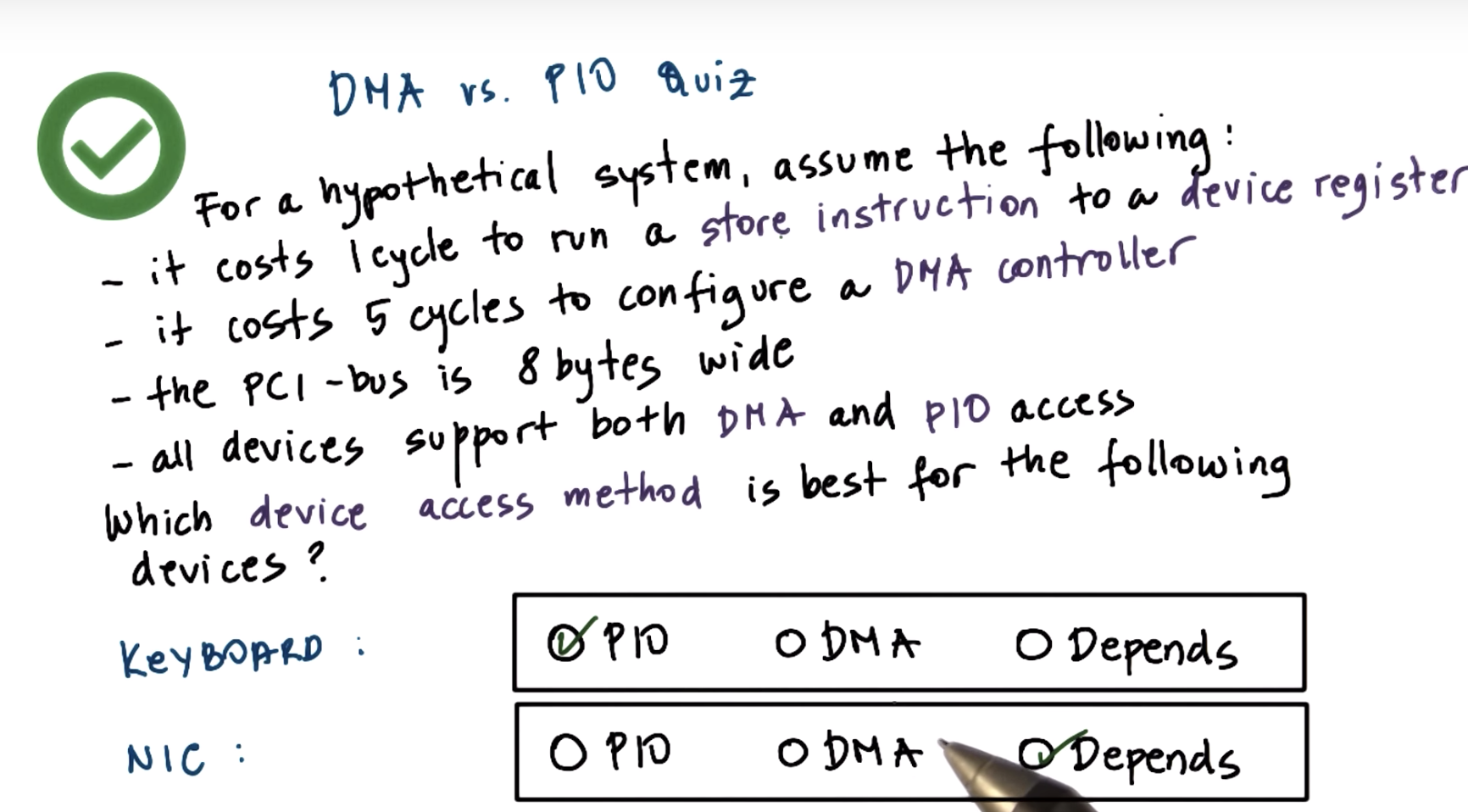
the answer to each question will depend heavily on the size of data packets.
Typical Device Access
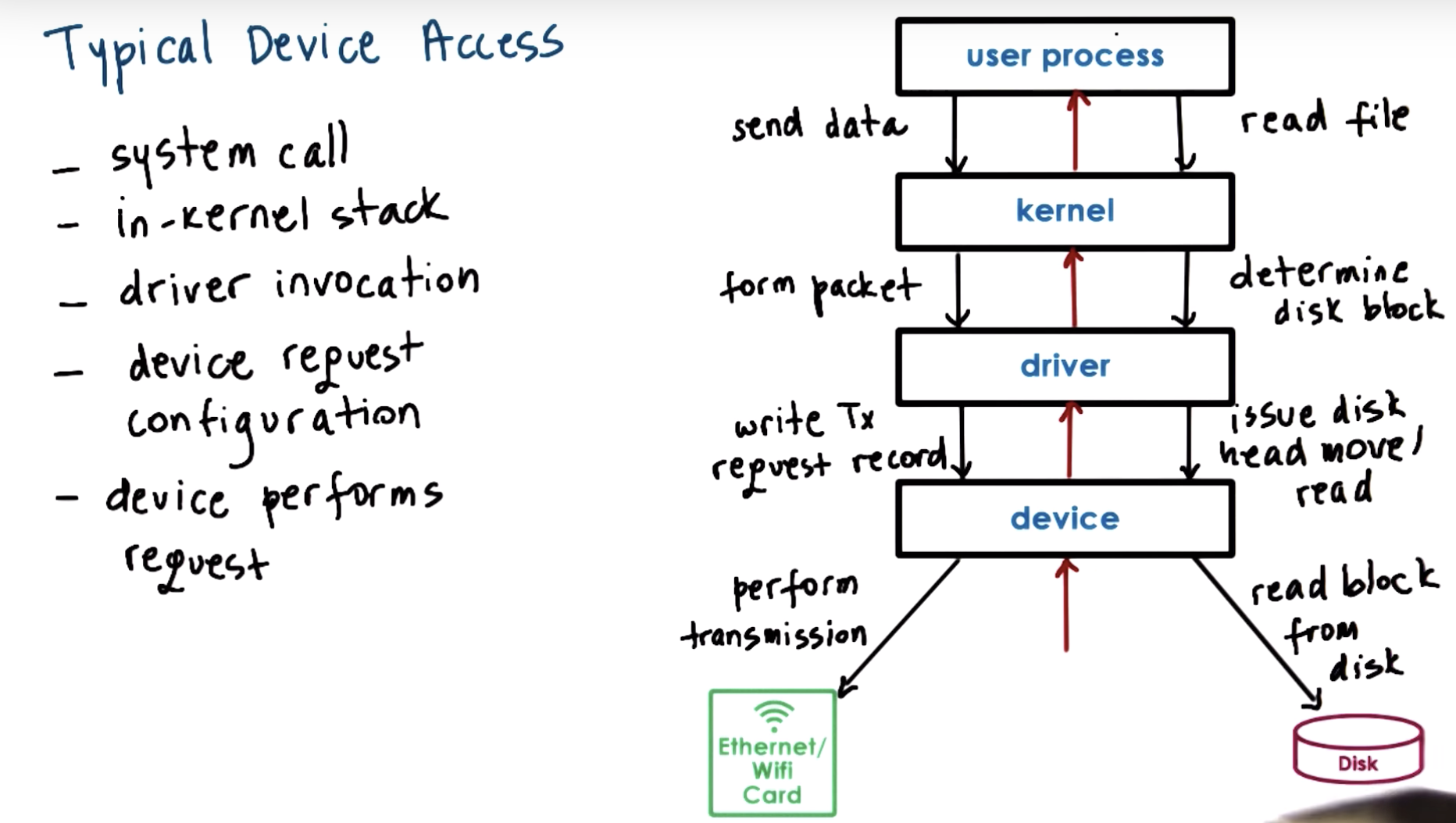
OS Bypass
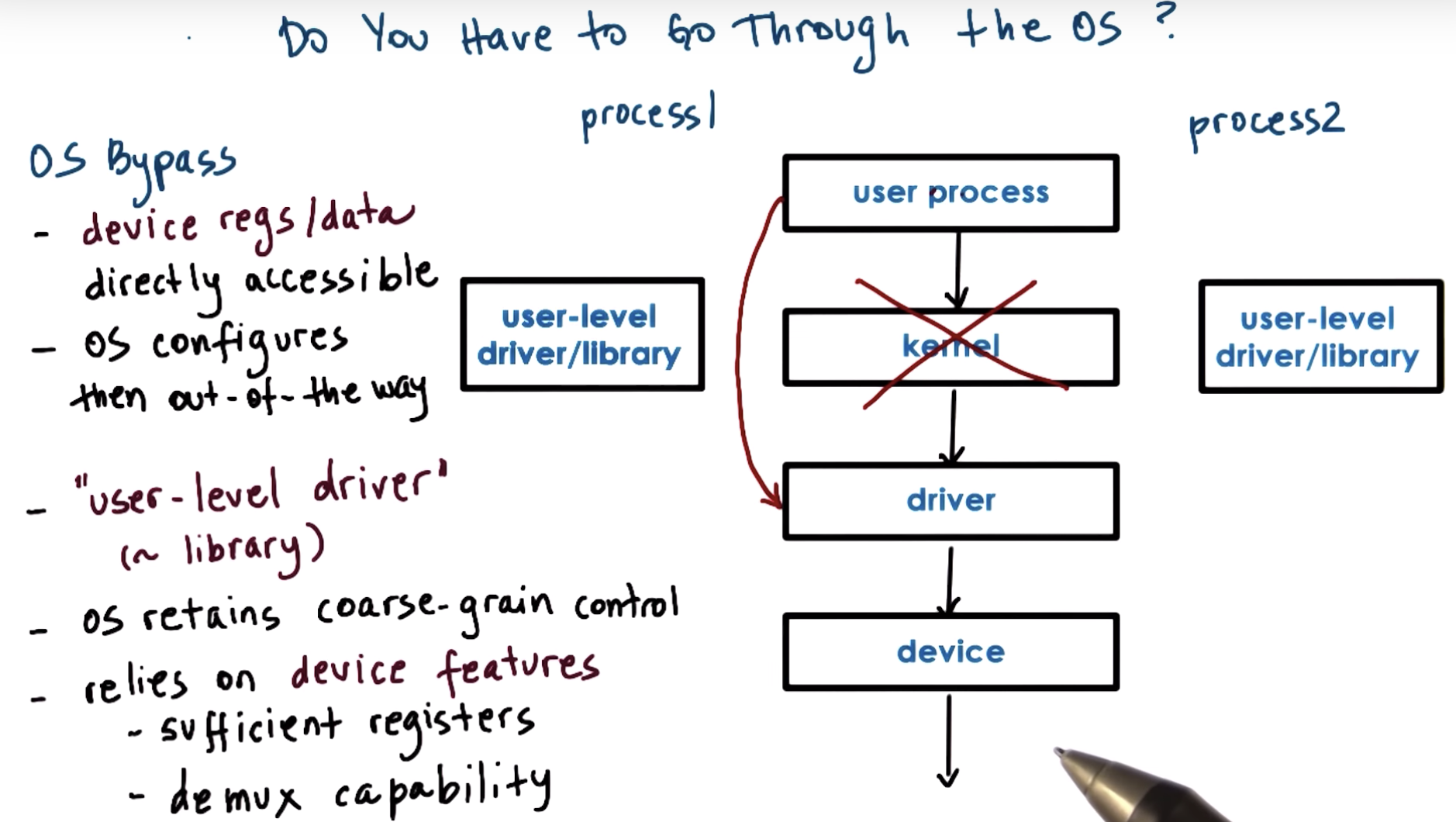
Sync vs. Async Access

Block Device Stack
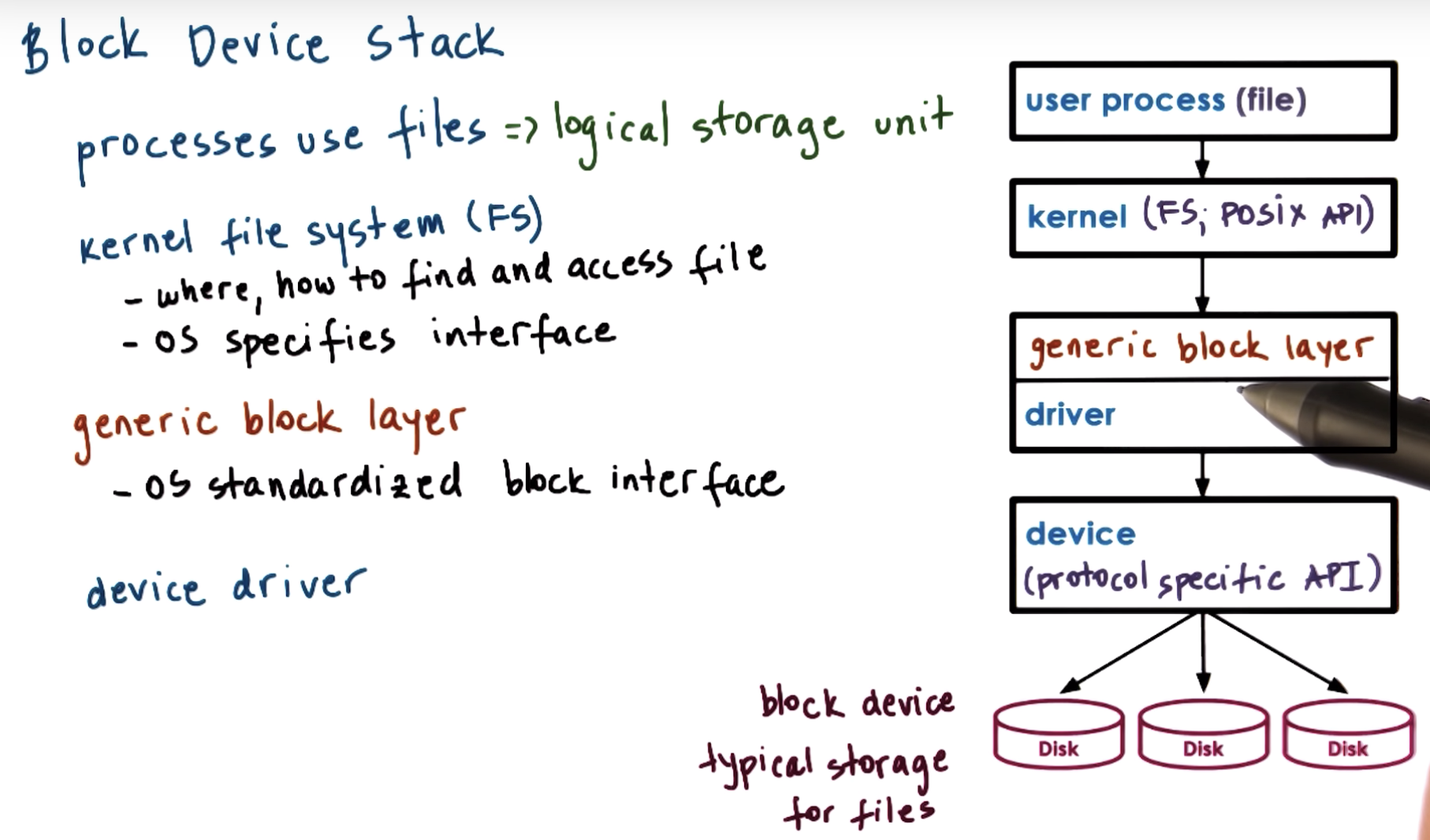
generic block layer => knows how exactly to interact with a particular driver
=> how to pass thoes operations to the particular driver and how to interpret the error messages or notifications or responses that are generated by that driver.
driver-device => protocal

Quiz Help
http://man7.org/linux/man-pages/man2/ioctl_list.2.html


Virtual File System
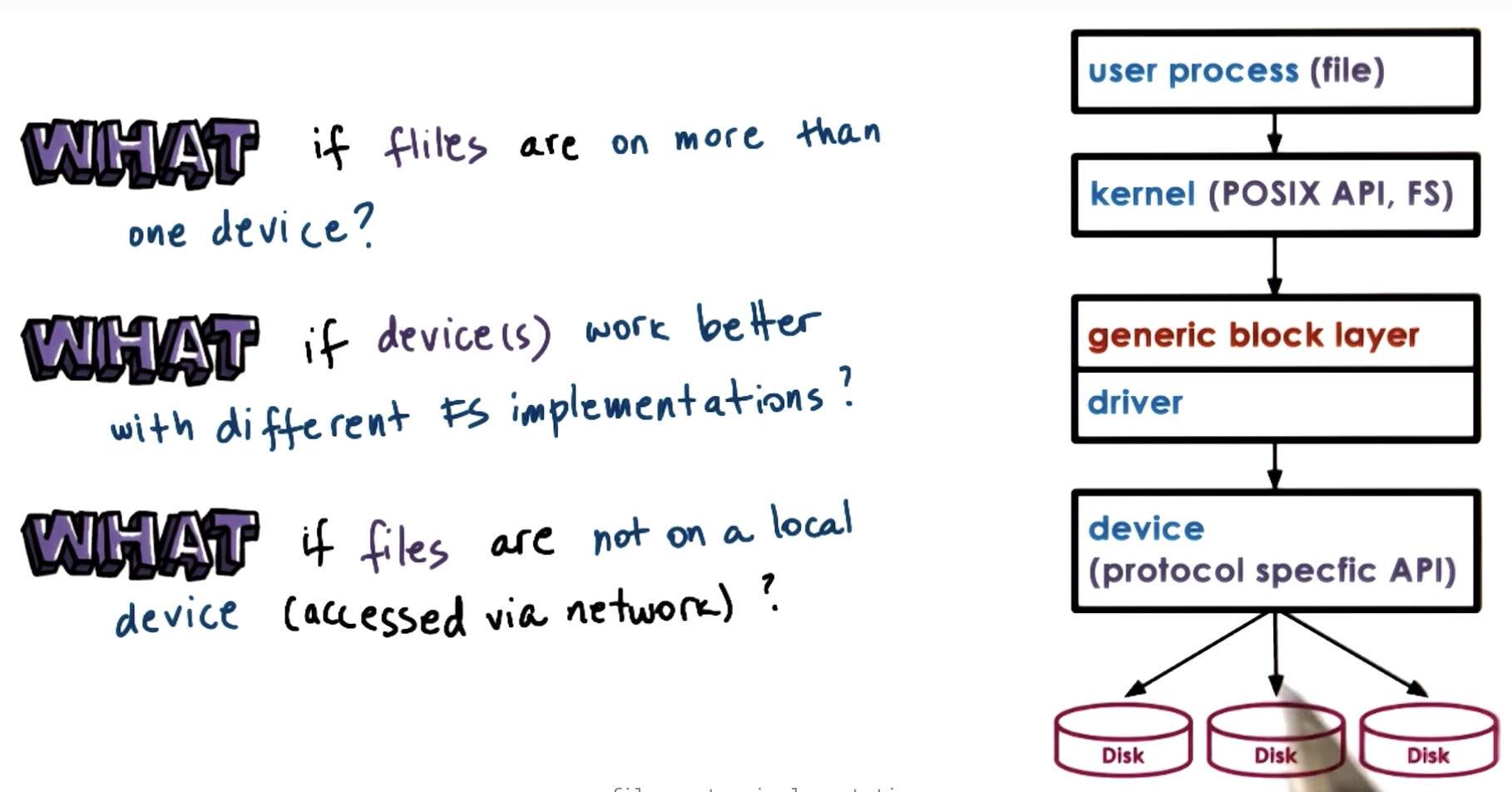
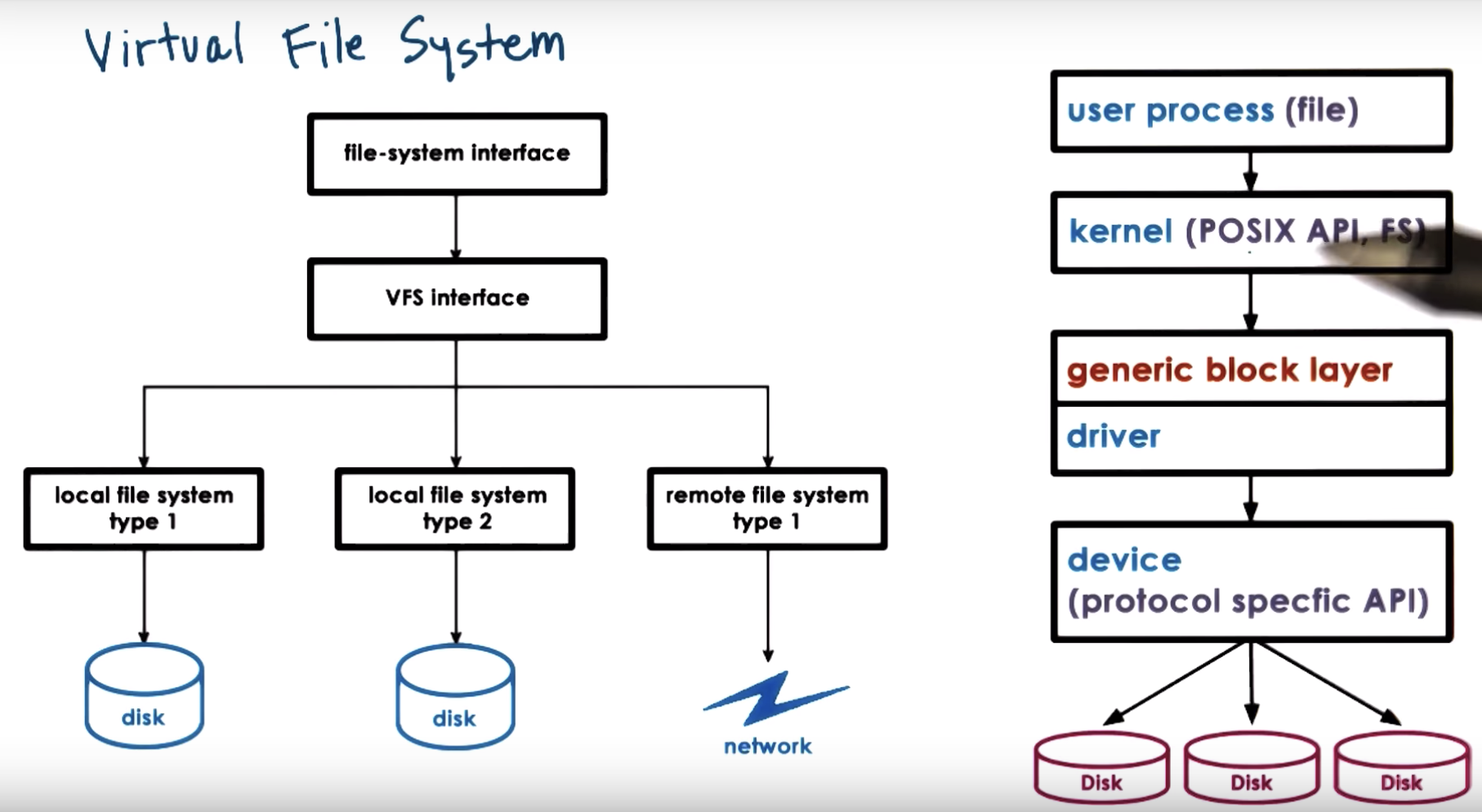
Virtual File System will specify a more detailed set of local file systems, performing the necessary translations.
Virtual File System Abstractions

OS represent files via file descriptors. A file descriptor is created when the file is first openen.
For each file, VFS maintains a persistent data structure called inode. => inode is a standard data structure in Unix-based system. => The file doesn't need to be stored contiguously on disk, and therefore, it's important to maintain this "index" (inode).
To help with certain operations on directories, Linux maintains a data structure called dentry, stands for directory entry. => FS will maintain a cache of all the directory entries that have been visited. and we call that the dentry cache.
superblock => like a map that file system maintains so it can figure out how has it organized on disk
VFS on Disk

ext2 Second Extended Filesystem
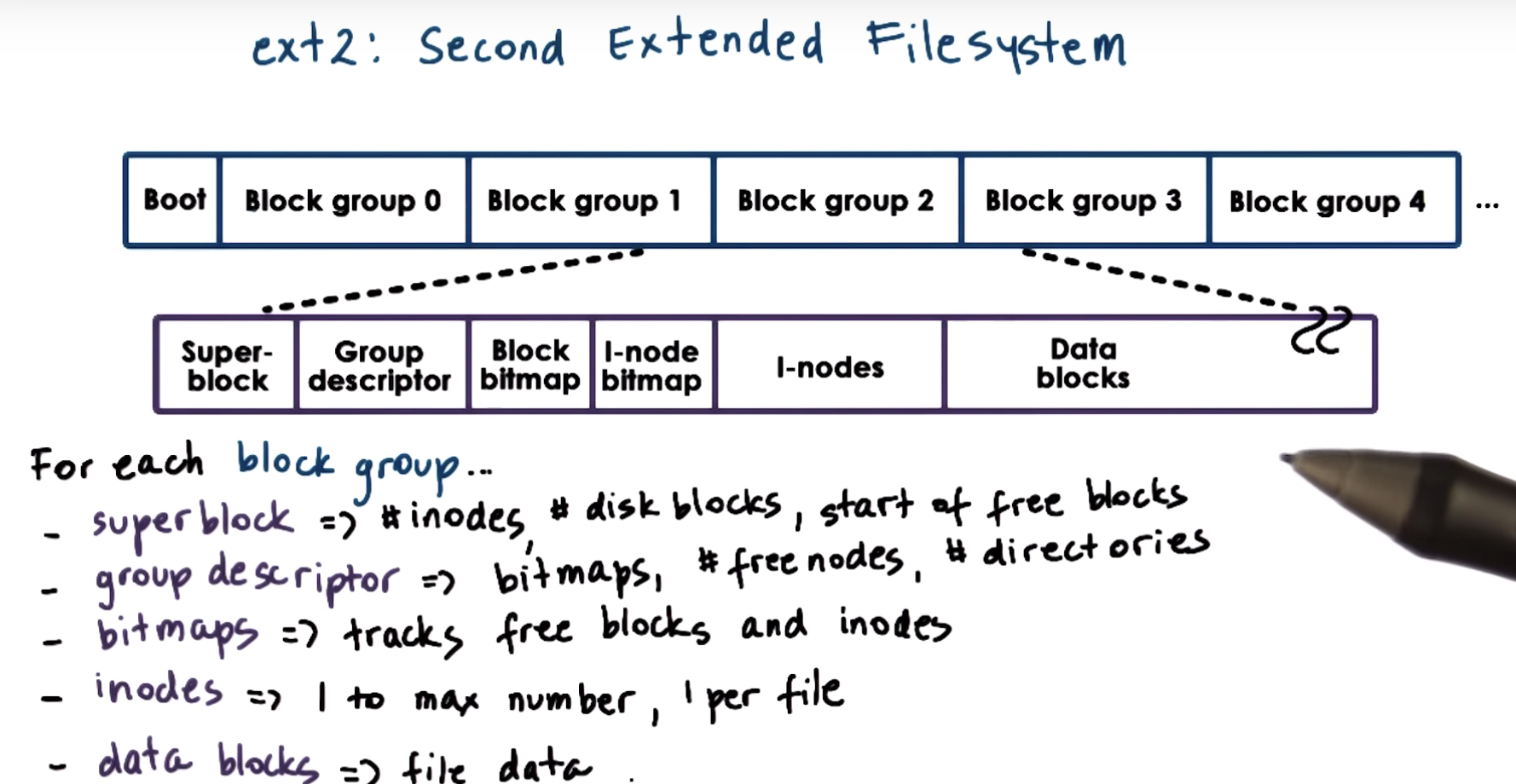
inodes


inodes with Indirect Pointers

https://zhuanlan.zhihu.com/p/24572756


Maximum File Size:
- number_of_addressable_blocks * block_size
- number_of_addressable_blocks = 12 + blocks_addressable_by_single_indirect + blocks_addressable_by_double_indirect + blocks_addressable_by_triple_indirect
You do not have to include units in your answers.
ERRATA
Properly rounding up the first answer results in 17GB or 16GiB (where GB is 10^(33) and GiB is 2^(310).
Disk Access Optimizations
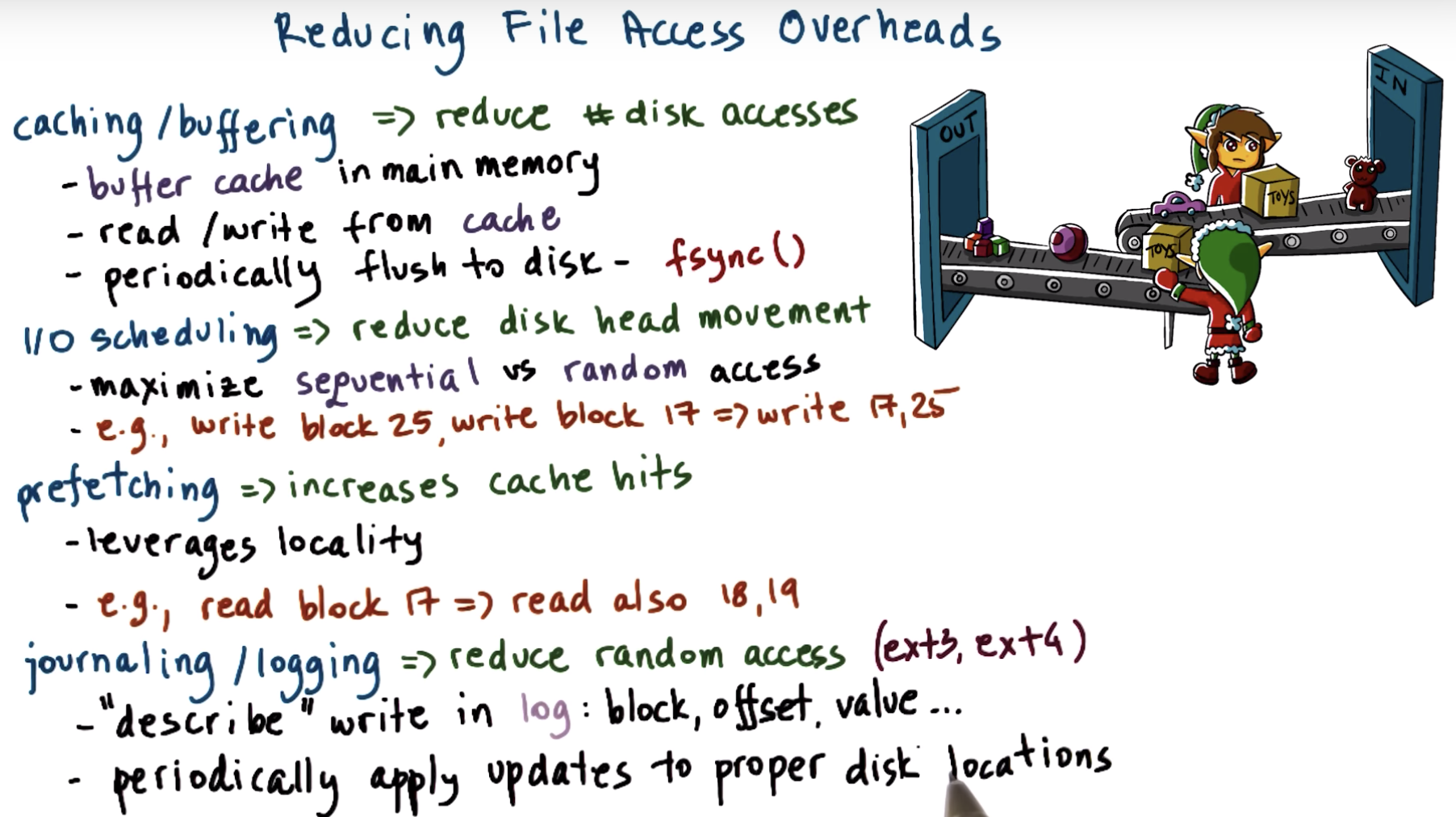
as opposed to writing out the data in the proper disk location, we write updates in a log. so the log will contain some description of the write that supposed to take place.
"block", "offset", and "value" essentially describes an individual write.
Note that journal has to be periodically updated into proper dislocation, otherwise it will just grow indefinitely and it will be really hard to find anything
Four techniques contribute to reducing the file system overheads and latencies.
This is done by increasing the likelihood of accessing data from memory, by not having to wait for the slow disk head movements.
